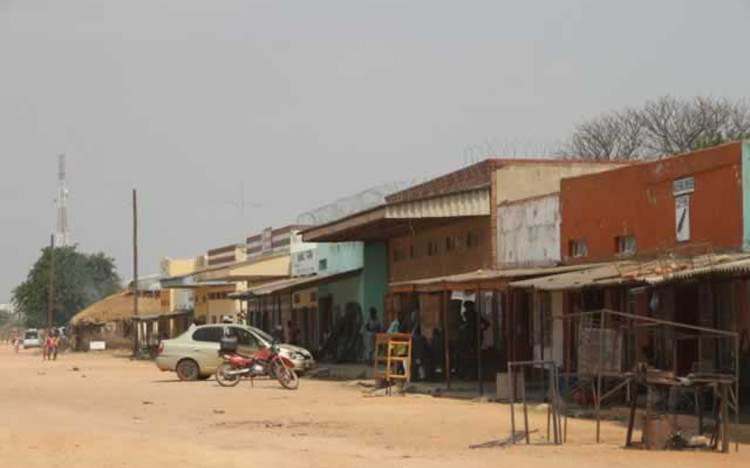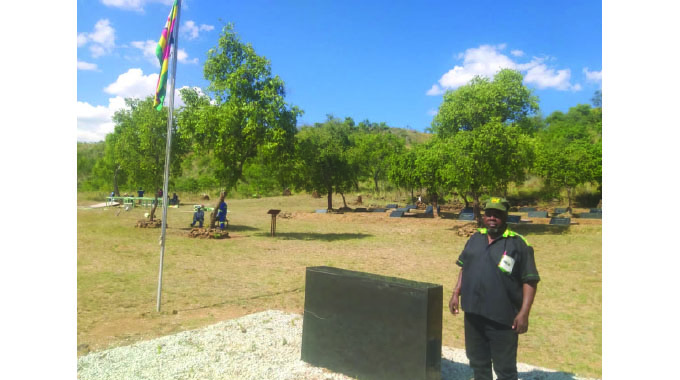Growth points fail to hit the mark

Talent Gore Features Writer
Growth points were introduced in an attempt to arrest the age-old dilemma of rural to urban migration affecting developing countries.
However, more than three decades after their introduction in Zimbabwe they have not reduced rapid urbanisation. In fact, the settlements have struggled to live up to expectation. Wedged in the middle of communal lands, the quasi-urban set-ups experienced phenomenal growth soon after the country’s independence in 1980, but they are now battling to remain relevant.
The continued reliance on Government assistance by communities and business has been among the causes of this regression. A sociologist with the University of Zimbabwe Mr Wisedom Ncube said during the 1980s many growth points were seeded by the Government.
“Investors, mainly in the form of commercial businessmen, were helped to put up structures and start viable businesses, either as individuals or as co-operatives,” he said.
ALSO SEE
The private sector seems to be skirting around these settlements.
“Most growth points are failing to attract meaningful investment except for the building of a few Government departments and Grain Marketing Board silos, which have gradually become white elephants.”
Urban and regional expert, Professor Kadmiel Wekwete said it is everyone’s collective responsibility to develop growth points. There has been misplaced sentiments that it is the Government`s sole responsibility.
“The corporate world should also help develop growth points into towns. The Government’s idea of growth points was noble, but they have regrettably been left to rot,” he said.
He said there are business opportunities attached to growth points.
“The business sector should also sponsor rural fairs where ecopreneurs can showcase products appropriate for rural needs.
“The objective would be to present rural communities with a range of technologies from which to choose a sustainable source of income as well as bring producers and users of such technologies together,” said Prof Wekwete.
There has to be a change of mind in the business world to give life to growth points.
“The corporate sector, the messages are clear, we need a paradigm shift by going simple and basic in order to tame the abundant rural markets in a sustainable way.
“If we don’t, then foreigners take what is ours right from under our noses. We should come down from our high horses, be real, locally relevant and truly indigenous,” Prof Wekwete said.
University of Zimbabwe-based rural and urban planner and analyst, Innocent Chakanyuka said the concept of growth points was introduced by the Government in the 1980s as a way to decongest cities and towns.
“This was done mainly to curb the rural-to-urban migration through employment creation and the availing of basic services to people in rural areas,” he said
More than three decades later, most of the growth points are undeveloped with beer outlets being the most lucrative businesses. Villagers have also felt the pinch of the slow progress in growth points.
James Mazazi, the village headman in Zvimba, Mashonaland West Province, said that even though the Government was facing challenges, it needed to do something to revive growth points.
“There have not been any meaningful changes at the centres three decades after independence,” he said.
“Pubs are still as popular as they were back in the day. Many of our children have crossed the borders in search of better prospects because the shops that are opened no longer get any assistance from Government (to grow their business) and they have remained general dealers.”
Mazazi said that no real development had occurred.
“The government promised to bring investment and create jobs for our youths, but over the years nothing much has happened and our youths continue to rely heavily on farming as a form of employment,” he said.
And in Zvimba, where the rainfall is erratic and the quality of the soil poor, this is not a guaranteed way to earn a living.
“Here in Zvimba farming is not reliable. It is more difficult to make a living as a result,” said Mazazi.
However, dotted across the country, vast acres of land that were intended to be growth points lie dormant. Silvester Candiero, headman for Nhongo village in Gokwe, a small town in the Midlands Province, said tobacco sales offices should be located at growth points. This, he said, would save farmers the tiresome journey to major towns and the trouble associated with selling tobacco leaves.
“Tobacco farmers travel considerable distances to Harare and some get stranded in the capital were they spend weeks or months without any roof over their heads,” he said.
“There have been cases of farmers who lose their money to thieves after they are paid. These mishaps can be avoided if growth points are used to sell their produce,” said Candiero.
Current economic hardships have played against growth points. Tendayi Muchemedza, an economist with mining consultancy Environmental Eagles, said the slow growth is not exclusive to growth points only.
“We are operating in difficult times economically, quite a number of sectors are facing problems,” he said.
He added; “Farming has shifted from commercial to subsistence farming, and there are no industries and the small shops, which remain open at growth points, are general dealers.”
Once the economy starts recovering, there is a likelihood that the growth points may follow suit. Growth points are centres of economic activities which are created or stimulated in disadvantaged regions with the intention that they eventually become centres of economic growth.
According to analysts, growth points were meant to develop into towns, complete with their own industries and housing estates. Despite the fact that most growth points did not develop into towns, there are some which gained town status, for example Mupandawana, Gokwe town, Murehwa, Juru-Bhora, and Murambinda.
The turning for these growth points into towns saw revenue generated there being used to further develop the urban settlements by expanding infrastructure such as sewer and water reticulation, roads and even residential areas.
On a broader perspective, they have failed to reduce pressures on the country’s major towns and cities. The failure by the growth points to plug migration into cities has resulted in the capital city, Harare, experiencing swift growth.
This has caused living standards in the sunshine city to drastically deteriorate due to worsening water and sanitation conditions. Harare is among Africa’s 40 cities with more than a million people.
More than three decades after Zimbabwe’s independence, the idea of developing its rural areas seems to have been laid to rest, as points intended for development have been turned into beer outlets, which seem to be more lucrative than industry.
Their purpose was to provide employment in rural areas and improve the local economy, without forcing people to migrate to large cities and towns to find work. Sadly, that has not been the case.







Comments